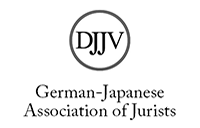„Umgekehrte Wagenreihung“. Was führt dazu, dass das Erscheinungsbild der Eisenbahn nach den Bahnreformen in Japan und Deutschland so unterschiedlich ausfällt?
Abstract
In both Japan and Germany, the post-war railway systems were state-run and both countries implemented rail reforms at similar times. However, today, the passengers' experience of rail transport differs greatly between the two countries.
Whereas Japan is seen globally as „the railway country“ and impresses visitors with its punctuality records, in Germany passengers are already happy when trains are running at all. Here, it happens that even crucial lines are shut down for months, causing inconvenience to thousands of commuters. In Japan it would not be imaginable that, for example, the Yamanote line in Tōkyō between Shinjuku and Shibuya were shut down for six months with substitute buses offered instead.
In this contribution, the author seeks to describe and analyse the differences in the organisation of the railway systems in the two countries. It will be shown that neither the initial situation of the state-run railways nor the later reforms are entirely comparable. As a result of the current legal framework of the unfinished reforms in Germany, the advantages of the railway in comparison to other means of transport are not fully realised. However, in Japan, where the railway operates within a system of fair competition without subventions, these advantages mean that the railway business is profitable and is the leading means of transport among car, bus, air and ferry.






